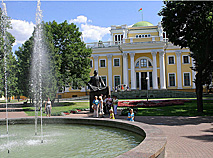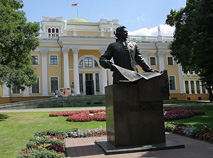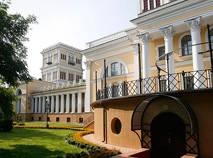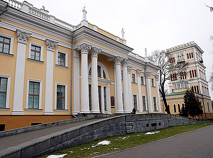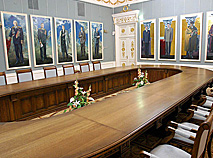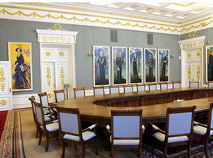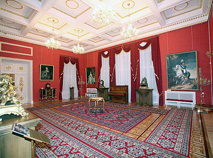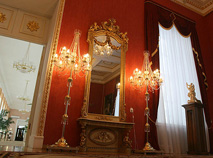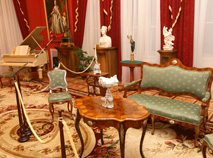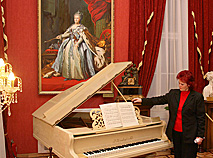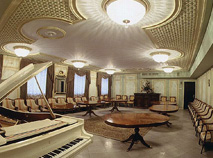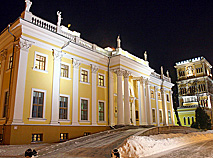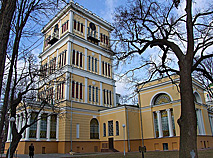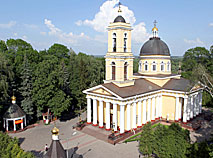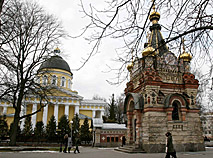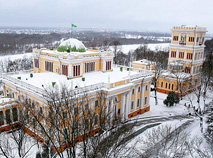Palace of the Rumyantsevs and the Paskeviches in Gomel
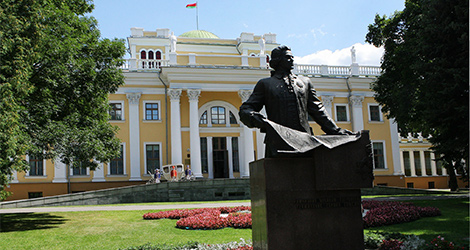
Palace of the Rumyantsevs and the Paskeviches in Gomel
The Palace of the Rumyantsevs and the Paskeviches in Gomel is one of the most beautiful examples of architecture in Belarus. Currently the unique museum complex in central Gomel unites the palace of the Rumyantsevs and the Paskeviches, a chapel and a burial vault, a winter garden, a watchtower and a picturesque old park.
History of the Palace of the Rumyantsevs and the Paskeviches
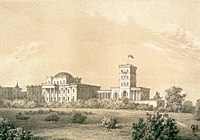 In the late 18th century the Belarusian lands were part of the Russian Empire. Empress Catherine the Great gave Gomel to her favorite, General Field Marshal Piotr Rumyantsev-Zadunaisky, for his outstanding victories in the war against Turkey.
In the late 18th century the Belarusian lands were part of the Russian Empire. Empress Catherine the Great gave Gomel to her favorite, General Field Marshal Piotr Rumyantsev-Zadunaisky, for his outstanding victories in the war against Turkey.
On the bank of the River Sozh there was a wooden castle, which had earlier belonged to Michal Fryderyk Czartoryski, the Grand Chancellor of Lithuania. Piotr Rumyantsev had the wooded castle demolished and a new one built.
The construction of the castle in the style of early Classism began in 1777, with prominent architects of that time Y.N. Alekseyev, K.I. Blank, Y.M. Felten, M.K. Mostsepanov advising on its design.
Yet, the name of the main architect remains unclear. Historians believe it could be Ivan Starov, a talented architect who designed many famous buildings in St. Petersburg.
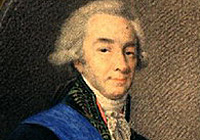 The palace was inherited by Piotr Rumyantsev’s elder son, Nikolai Rumyantsev, Chancellor of the Russian Empire, a patron of sciences and arts.
The palace was inherited by Piotr Rumyantsev’s elder son, Nikolai Rumyantsev, Chancellor of the Russian Empire, a patron of sciences and arts.
In 1834 the Gomel residence was purchased by another Field Marshall Ivan Paskevich who had both the palace and the park substantially renovated.
In the 19th and early 20th centuries the palace witnessed lavish receptions, balls and official events. The residence hosted many members of the Romanov imperial family.
The last owner of the Gomel estate was Duchess Irina Paskevich, a patron, a philanthropist and a translator. She made the first translation of Leo Tolstoy’s War and Peace into French.
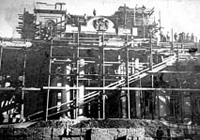 Later the residence, its rich library and collections became part of the Museum of Art and History which was opened in 1919.
Later the residence, its rich library and collections became part of the Museum of Art and History which was opened in 1919.
The palace was destroyed and restored several times. It suffered the most severe damage during an uprising in 1919 and the Great Patriotic War.
Throughout its history the palace was used for various purposes. It housed a telephone station, a library, a puppet theater, a youth center and a museum.
Palace of the Rumyantsevs and the Paskeviches today
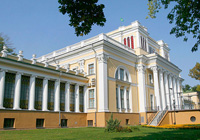 Today the former residence of the aristocrats in Gomel is one of the most interesting and frequently visited Belarusian museums and a major historical, cultural and educational center.
Today the former residence of the aristocrats in Gomel is one of the most interesting and frequently visited Belarusian museums and a major historical, cultural and educational center.
The ground floor of the central part of the palace has exactly the same interior as in the past thanks to the meticulous restoration based on historic documents. This part of the palace still houses Column Hall, White Living Room, Red Living Room and a hall of ceremonies (former Golden Dining Room).
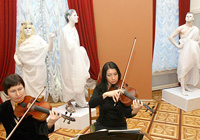 These halls are not merely a part of the exposition. They are also used for balls, concerts and meetings attended by top officials from different countries. The Gomel palace also hosts picture, photo and other kinds of exhibitions and interesting educational projects.
These halls are not merely a part of the exposition. They are also used for balls, concerts and meetings attended by top officials from different countries. The Gomel palace also hosts picture, photo and other kinds of exhibitions and interesting educational projects.
The collection of the Gomel palace is one of the richest in Belarus. It comprises archeological, ethnographic and numismatic collections, pictures, handwritten books and books printed before the 18th century, icons and religious items, marine organisms and memorial complexes commemorating outstanding persons (such as aircraft designer Pavel Sukhoi, Foreign Minister Andrei Gromyko and others).
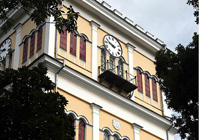 The tower built to Ivan Paskevich’s design houses the exhibition “Owners of the Palace of the Rumyantsevs and the Paskeviches in Gomel”. The exhibition features original paintings, sculptures and dukes’ weapons and personal effects.
The tower built to Ivan Paskevich’s design houses the exhibition “Owners of the Palace of the Rumyantsevs and the Paskeviches in Gomel”. The exhibition features original paintings, sculptures and dukes’ weapons and personal effects.
In 2012 the Palace of the Rumyantsevs and the Paskeviches in Gomel won the Grand Prix of the first contest called “Museums of Belarus - to the Third Millennium”.
How to get to Palace and where to stay
The Palace of the Rumyantsevs and the Paskeviches is located in the city center on the bank of the River Sozh, at 4 Lenin Square. You can get to Gomel (which is located 300km away from Minsk) by car, bus or train. There are more than ten hotels in Gomel.
Gomel Landmarks
Visitors should definitely see the following sites: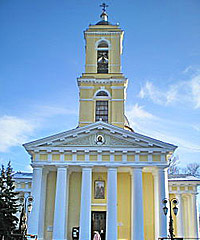
-
St. Peter and St. Paul’s Cathedral (on the premises of the Rumyantsev-Paskevich Palace)
-
St. John the Forerunner Church
-
The hunter’s house
-
A branch of the Vetka Museum of Old Belief and Belarusian traditions
-
Roman Catholic Church of Nativity of Mother of God
-
St. Ilya Church (the oldest church of Old Belief which has survived in Belarus)
-
The quay of the River Sozh
Gomel’s jewel, the Palace of the Rumyantsevs and the Paskeviches, has been included in the tourist itinerary “Golden Ring of the Gomel Region”, which unties the historic sites in Vetka, Chechersk, Krasny Bereg, Rechitsa, Loyev, Mozyr, Yurovichi and Turov.


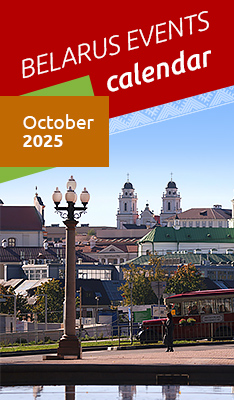




 print version
print version make home page
make home page add to bookmarks
add to bookmarks